Get started and learn about using a 2001 Toyota Land Cruiser 100 for overlanding. Find out about customizations, upgrades, and essential tips for a successful journey.
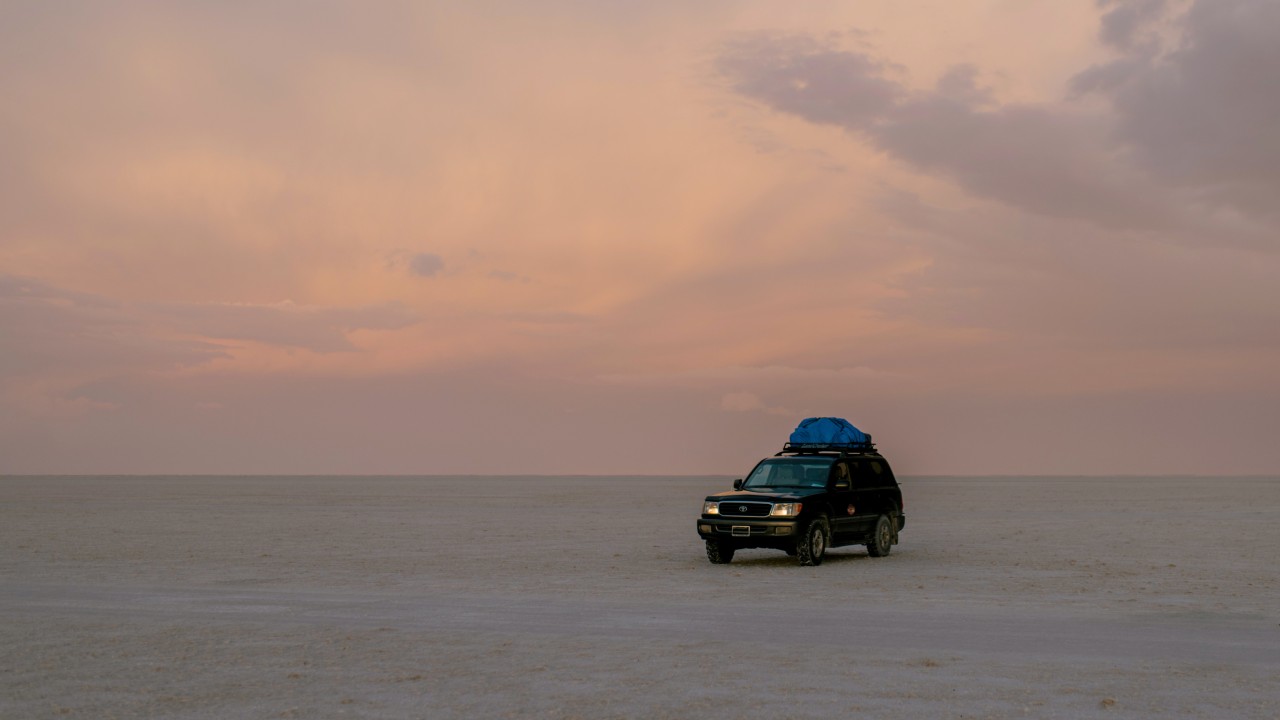
- Introduction
- Toyota Land Cruiser 100: A Brief History
- Pros of using a 2001 Toyota Land Cruiser 100 for overlanding
- Cons of using a 2001 Toyota Land Cruiser 100 for Overlanding
- What to look for when buying a 100 series Land Cruiser?
- Customizing and Upgrading Your 2001 Toyota Land Cruiser 100 for Overlanding
- Customizing and Upgrading
- Overview of popular modifications
- Importance of choosing the right modifications
- Must-have upgrades for overlanding
- Tires and Wheels For The Land Cruiser 100 Series For Overlanding
- Rear Bumper Bar and Tire Carrier
- Heavy Duty Suspension and Lift
- Importance of professional installation
- VII. Conclusion
Introduction
Overlanding refers to self-reliant adventure travel, typically in a modified 4×4 vehicle, to remote destinations where the journey is the main goal.
Choosing the right vehicle for overlanding is crucial as it can greatly impact the success and enjoyment of the trip. The Toyota Land Cruiser 100, also known as the Toyota 100 Series, is a popular choice for overlanders. Its reputation for reliability, versatility, and off-road capabilities speaks for itself. Even though the media focuses on highly modified 70 Series Land Cruisers from Australia.
The purpose of this article is to provide a comprehensive review of the pros and cons of using a 2001 Toyota Land Cruiser 100 for overlanding. Providing valuable insights to those considering this vehicle for their next adventure. It is important to consider the year and model of a vehicle for overlanding. Different model years can have different capabilities and features, which can impact the overall experience.
Toyota Land Cruiser 100: A Brief History
Land Cruiser is a line of SUVs produced by Toyota that has been in production since 1951. The Toyota Land Cruiser 100, was introduced in 1998 as a replacement for the previous model, the 80 series. The LC100 was built with a more modern design, (arguably) improved capabilities, and more advanced features.
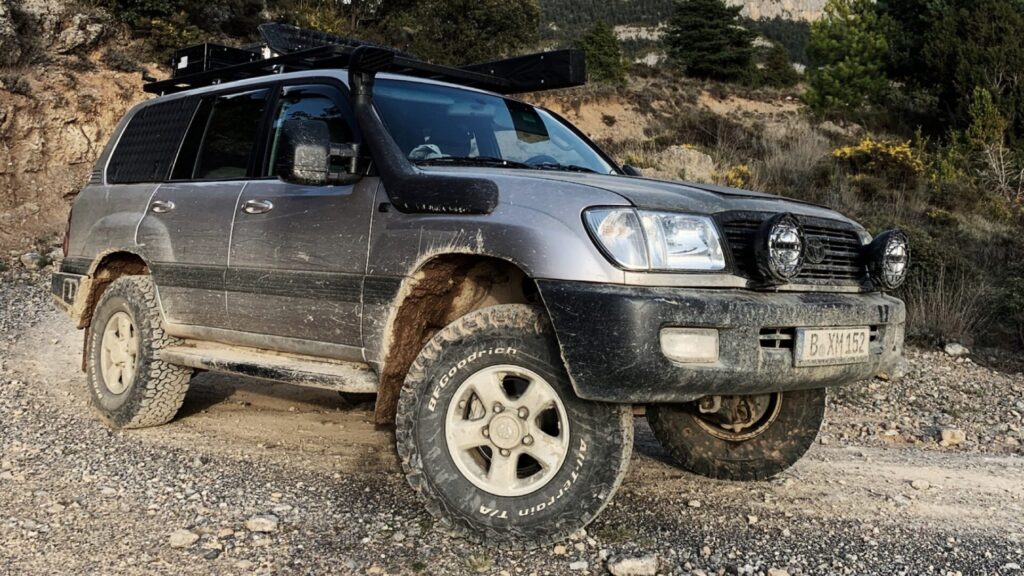
Which Model Year is the Best Land Cruiser 100
Undergone several updates and improvements over the years, including changes to the transmission (4-Speed to 5-Speed Automatic), suspension (Automatic Height Control – AHC) and a facelift. These updates have improved the overall performance, comfort but not necessarily the capabilities of the 100 Series.
It is important to consider the differences between the model years of the Toyota Land Cruiser 100 when choosing a vehicle for overlanding. For example, early model years may only have the 4-Speed Auto transmission but were available without the AHC. Latter is said to be very high maintenance. It often gets deleted by new Overlanders in favor of an aftermarket suspension.
The later model years come with the nice facelift, the smother 5-Speed Auto and of course the AHC. Depending on the market they were available as a thirsty but energetic V8 petrol engine or if you are lucky the famous 1HD-FTE engine. The same diesel engine that is used in the 79 Series farm truck down under. Only without the well loved turbo that the 100 Series comes with from factory.
2001 is the model year to go for our needs. Unless there would be 2003 or newer without the AHC and with a rear locker.
Further the different models years can help to determine which one is the best fit for your needs and preferences. As the 100 Series was available as a 5 or 7 seater and with or without a sunroof. One that was prone to leak in almost all the used ones I have inspected prior to buying one without. Some days I wish for a sunroof and most days I don’t.
To help you find what fits your needs I have a whole section of articles to guide you HERE.
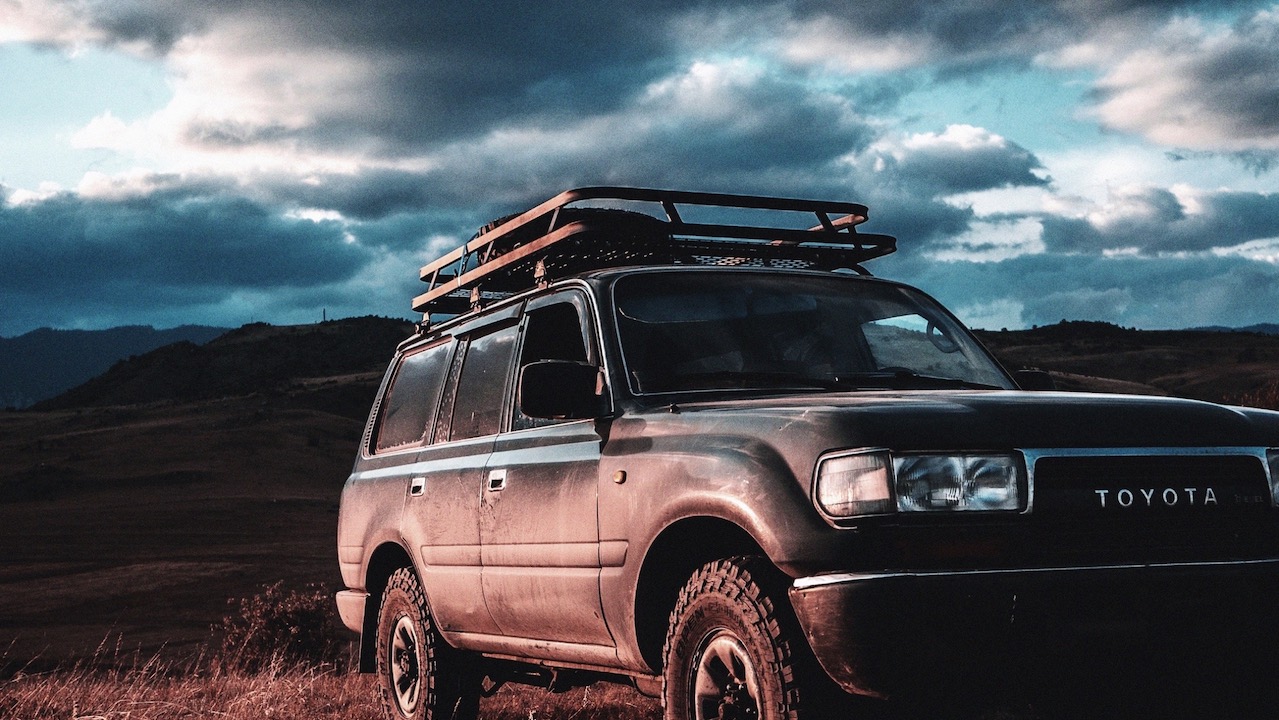
And if you’re still unsure whether you want a new Land Cruiser for Overlanding or an old Land Cruiser 100, the following article may be useful.
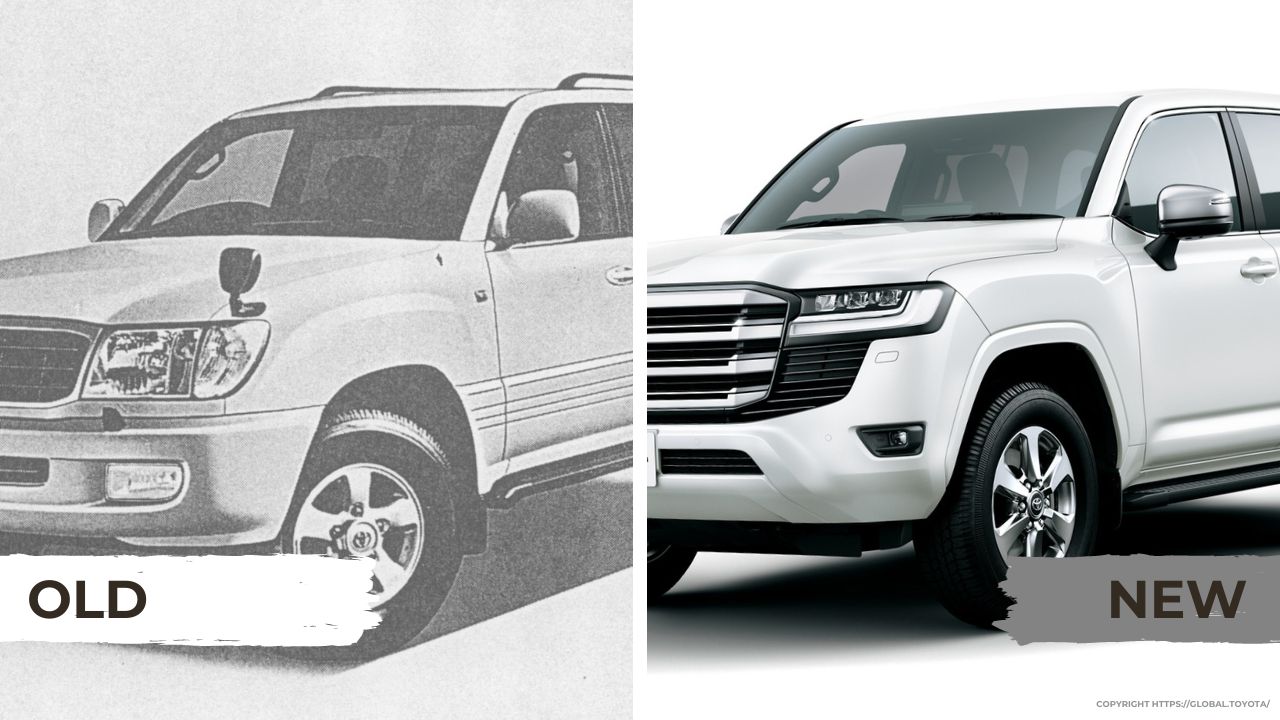
Pros of using a 2001 Toyota Land Cruiser 100 for overlanding





Reliability
The 2001 Toyota Land Cruiser 100 has a reputation for being a reliable and durable vehicle, especially when it comes to its engine. All professional mechanics I have spoken to, attest to the dependability of the 4.2-liter V6 (1HD-FTE) engine. Which was used almost all across the 100 Series in Europe. This engine is known for its long-lasting durability, even in harsh conditions, making it a smart choice for overlanding.
Additionally, the 2001 LC100 features a sturdy and well-designed chassis that can withstand the rigors of off-road driving. The underbody is protected by some basic skid plates, which helps to prevent damage from rocks, logs, and other obstacles that may be encountered on the trail.
Furthermore, the 2001 Toyota Land Cruiser 100 was designed with simplicity in mind, which makes it easier to maintain and repair on the road. Common maintenance items, such as filters and fluids, can be easily accessed. Further the LC100 has a straightforward electrical system (I don’t mean easy or simple!), making it less prone to issues.
More about maintaining and servicing a Land Cruiser 100 can be found here: Land Cruiser 100 Service DIY: A Comprehensive Guide for Overland Adventurers
In conclusion, the reliability of the 2001 Toyota Land Cruiser 100 is a significant advantage for overlanders who need a dependable vehicle that can handle the demands of off-road travel. The sturdy construction, dependable engine, and straightforward maintenance make the LC100 a top choice for those looking for a reliable vehicle for their next overlanding adventure.
Off-Road Capabilities
Of course the 2001 Toyota Land Cruiser 100 was constructed with off-road capabilities in mind, making it an excellent choice for overlanding. So does every other Land Cruiser as well. The LC100 features a robust suspension system. Heavy-duty shock absorbers and for the first time an independent front suspension. Which together provides a stable and comfortable ride even in rough terrain.
Some might see that as a step back for the reasons being increased maintenance effort and decreased ground clearance under the differential. And that is true when compared to the 80 or 70 Series. On the other hand, that only makes a real difference in extreme offroading.
By itself in stock form, the LC100 has a already high ground clearance of 220mm(8.6″), which provides ample clearance for obstacles, such as rocks and logs. The all-time four-wheel drive system of the LC100, also helps to provide excellent traction and control in most off-road conditions. Which many drivers won’t encounter regularly. The 100 Series Land Cruiser features a two-speed transfer case, which allows for low-range gearing, as well as a locking center differential. That guarantees equal power to all four wheels for optimal traction in the worst of circumstances.
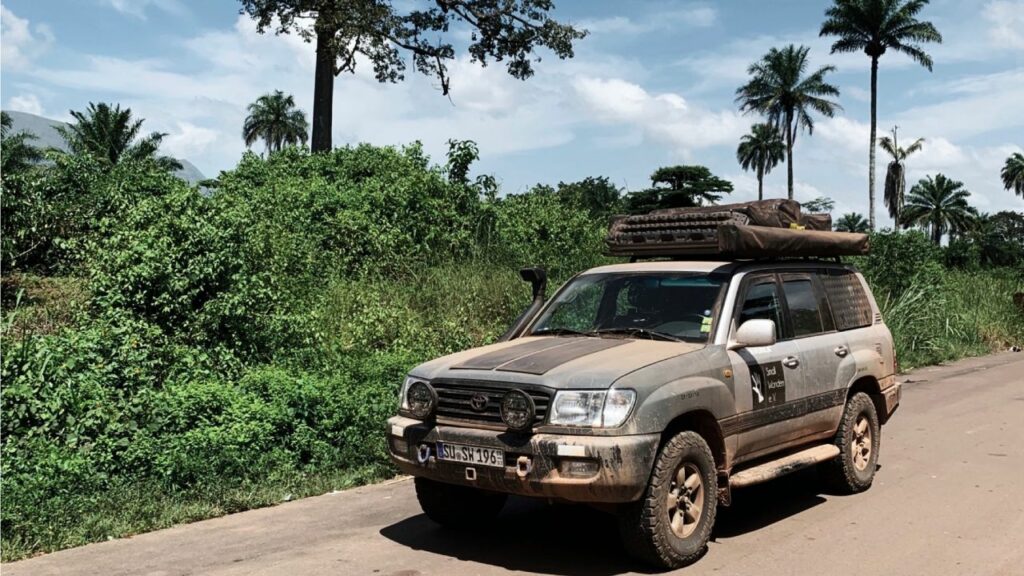
Versatility and Practicality
Being both versatile and practical, the 2001 Toyota Land Cruiser 100 is an ideal choice for overlanding. The LC100 can comfortably seat up to five, in some cases 7 passengers in its basic configuration. Providing ample space for friends and family to join in on a short adventure. Its interior is well-appointed with comfortable seats and ample storage space, making it a great choice for long-distance travel.
In addition, the LC100 has a large cargo area, which can be used to store camping gear, supplies, and other essentials for the trip. Besides some LC100s feature roof rails which provides additional storage space, such as a rooftop tent or roof racks.
The LC100 is also equipped with a powerful engine, providing ample power and torque for towing a trailer. The LC100 has a maximum towing capacity of 6,500 pounds, making it an excellent choice for those who plan to bring along a trailer or other gear.
Furthermore, the LC100 is equipped with practical features, such as a full-sized spare tire, which provides peace of mind in the event of a flat tire. It also features basic skid plates, which help to protect the underbody of the vehicle from damage while driving off-road.
Comfort In A Land Cruiser 100 For Overlanding
One significant pro of using the 2001 or any other model year Toyota Land Cruiser 100 for overlanding is the exceptional comfort it offers during long-distance travel. The Land Cruiser 100 boasts a spacious and well-appointed interior that provides ample legroom and headroom for both the driver and passengers. Good luck finding that with a Defender! The comfortable seats ensure a smooth and pleasant journey, even on rough terrain and over long periods of time.
Lesser known to most, the 100 Series also came in two different trims. Including two colors (beige and grey) as well as the so called GX and VX variants. The VX was sold the most in Europe and is what you will find at used car dealer ships these days. They came with nice heated electrical leather seats and cruise control. While all this adds complexity to the electrical system it is quite comfy when you sit in your car all day long.
In comparison to the hyped 70 Series the already insulated cabin reduces sound and vibrations tremendously. And if you look closely at the fully equipped 70s Land Cruisers out there, they will all have done the exact same things to them. Improved seats, sound insulation and sometimes even Auto Transmission swaps. With a Land Cruiser 100 you get all this straight away.
Additionally, the LC100’s independant front suspension effectively absorbs bumps and vibrations on road better than a solid front axle. This further enhances overall comfort during extended trips. Whether navigating through rugged landscapes or cruising on highways, the Land Cruiser 100 ensures a comfortable and enjoyable travel experience. Which makes it an excellent choice for those embarking on long-distance overlanding adventures.
Resale Value
The Toyota Land Cruiser 100 has a reputation for having excellent resale value, making it a smart investment for those looking to use it for overlanding. The LC100 is known for its reliability and durability, which is a major factor in its strong resale value. Many owners have reported their well-maintained vehicles have lasted for hundreds of thousands of miles without requiring major repairs. That alone makes them a popular choice for second-hand buyers.
Lastly, the LC100 has a timeless design that has remained popular among enthusiasts and collectors. The LC100 is often seen as a classic vehicle that will always have a place in the market, regardless of current trends. But that almost fits all Land Cruisers.
| Pros | Explanation |
|---|---|
| Reliability | Known for its dependability and safe performance |
| Off-Road Capabilities | Strong off-road capabilities and versatility |
| Versatility and Practicality | Can be used for a variety of tasks and situations |
| Comfort | Amenities make for comfortable long distance travel |
| Resale Value | Good resale value compared to other vehicles in the same class |
Cons of using a 2001 Toyota Land Cruiser 100 for Overlanding
Despite the many benefits of using a 2001 Toyota Land Cruiser 100 for overlanding, there are some notable drawbacks to consider as well.
| Cons | Explanation |
|---|---|
| Fuel Economy/ Range | Less than ideal fuel efficiency combined with small factory tank capacity |
| Maintenance Costs | Higher cost of maintenance and repairs compared to other vehicles |
| Size and Weight | Large size and heavy weight may limit access to tight trails and storage/payload |
| Age | Outdated compared to newer vehicles and lack of new features |
Fuel Economy
One of the main cons of using the LC100 for overlanding is its less than ideal fuel efficiency. Its even worse with the 4.7-liter V8 engine as powerful and capable as it is, but it is also known for being a bit of a gas guzzler. This can be a concern for those who plan to do a lot of miles, The Diesel LC100 may have a lower fuel economy compared to other vehicles in its class, making the 1HD-FTE diesel engine the better choice if at all available.
Furthermore, the Land Cruiser 100 has only one large fuel tank capacity of 93L(24.6 gallons). Which unfortunately only provides a range off around 600km(370mi) between fill-ups. This is not enough, especially if you plan to travel to remote destinations and may not have access to fuel for extended periods of time.
Note: On road fuel consumption for the Land Cruiser is around 12-14L(17-20mpg) equipped with a loaded roof rack, filled water tank and travel ready.
Maintenance Costs
Another drawback to consider is the cost of maintenance and repairs. The LC100 is known for its reliability, but it is still an older vehicle that may require more maintenance and repairs compared to newer overlanding vehicles. This can be a good thing, especially for those who are traveling in remote areas, where finding replacement parts or a qualified mechanic can be difficult with newer vehicles. It is important to keep in mind that regular maintenance is critical to ensuring reliable performance, no matter the vehicle.
The old diesel engine really can take a beating but with about 10L (2.6gal) of quality Oil, that needs to be changed every 5-10k kilometers, it can get expensive. And even though Toyota keeps stock of major parts for the Land Cruisers for at least 20 years after discontinuing the model, they will have you pay for that. Specifically when you get parts directly from a dealership.
More about maintaining and servicing a Land Cruiser 100 can be found HERE:
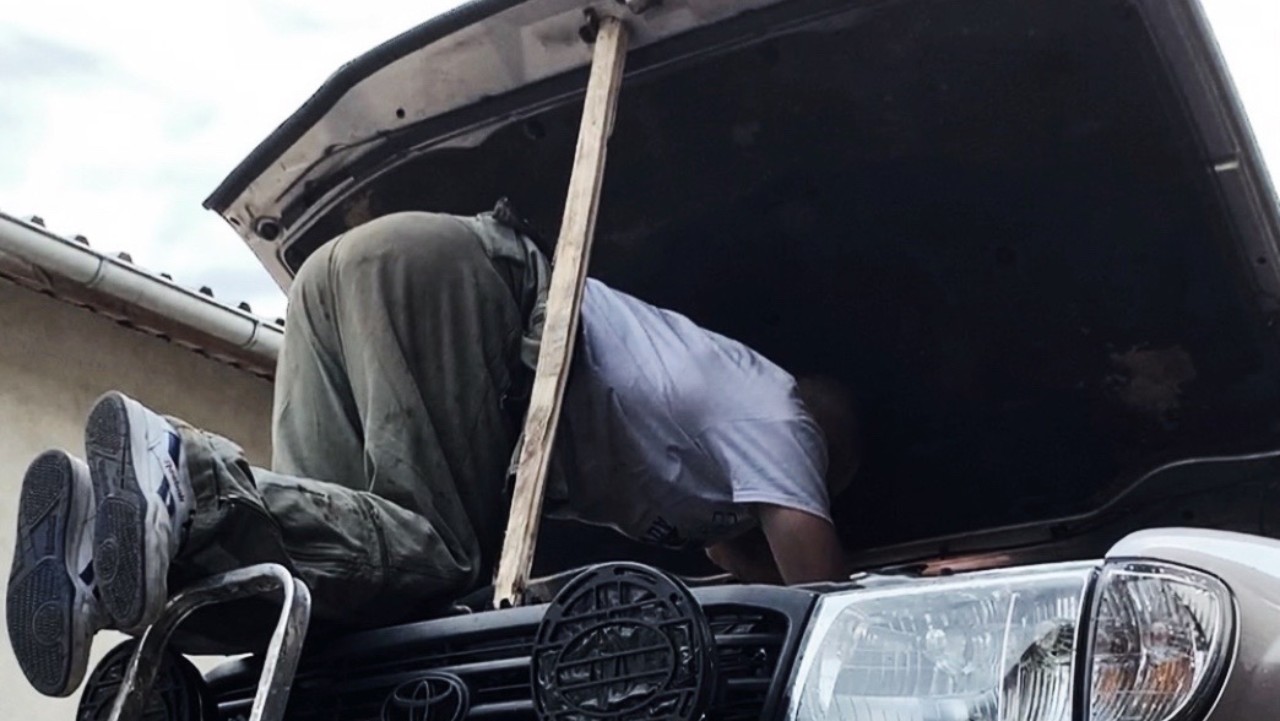
Size and Weight
The size of the LC100 can also be a challenge in some situations. The 100 Series Land Cruiser is a large and considerably heavy vehicle, which can make it difficult to maneuver on narrow roads or tight trails. That is in comparison to a Defender or a 70 Series Troopy. It is a trade off for the spacious cabin and the insulation.
Of course electrical leather seats for 7 people taking its toll on the actual payload. So does the sound and vibration dampening material. The 5 Seater VX has a payload of 725kg being more than almost all of the other available station wagons including the G-Class. The tin can of a old defender 110 for sake of this comparison has something around 1000kg.
While the Land Cruiser 100 is very capable off-road, its size and weight may be a hindrance in some specific situations, especially when compared to other purpose build vehicles outside it’s class.
Age
Finally, the age of the LC100 is something to consider. As it is with all used cars. The 100 Series was first introduced in 1998, and the 2001 model year is over two decades old. While the LC100 is known for its reliability and durability, age can start to take a toll on even the most well-built vehicles. Nothing runs forever and even with low mileage used Land Cruisers some parts need replacing just because of its age.
Some of the features in the LC100 may be outdated compared to newer vehicles, and it may lack some of the advancements and new features found in more recent overlanding vehicles. Which probably relates back to the discussion on how complicated a electrical system can or should be for overlanding. When deciding whether the LC100 is the right vehicle for your overlanding needs, it is important to take its age into consideration.
It also means the used ones available on the market may have one or the other surprise ready for you. Prices will range accordingly.
What to look for when buying a 100 series Land Cruiser?
This is a very difficult and very extensive topic. We will have a post coming in the near future! Including a list you can take with you when you will go shopping for a used Land Cruiser 100.
Please come back at a later stage or sign up for the newsletter now to get notified!
Customizing and Upgrading Your 2001 Toyota Land Cruiser 100 for Overlanding
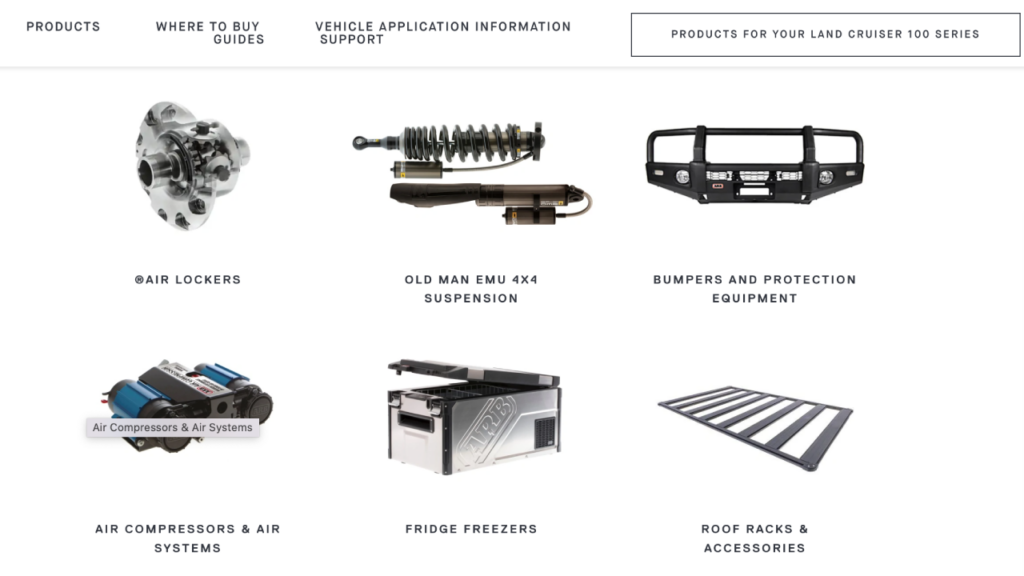
Customizing and Upgrading
The Toyota Land Cruiser 100 is a versatile vehicle that can be easily customized and upgraded to enhance its performance for overlanding. Customizing and upgrading your vehicle can not only make it more capable, but it can also improve your overall experience and make it better suited for your specific needs.
Overview of popular modifications
Popular modifications for the Land Cruiser 100 include suspension upgrades, wheels and tires. These modifications can improve the vehicle’s off-road capabilities, increase comfort, and enhance its overall functionality.
But at the same time the topic is too extensive to cover it at this point. Still here are a few related articles to see some of my favorite modifications:
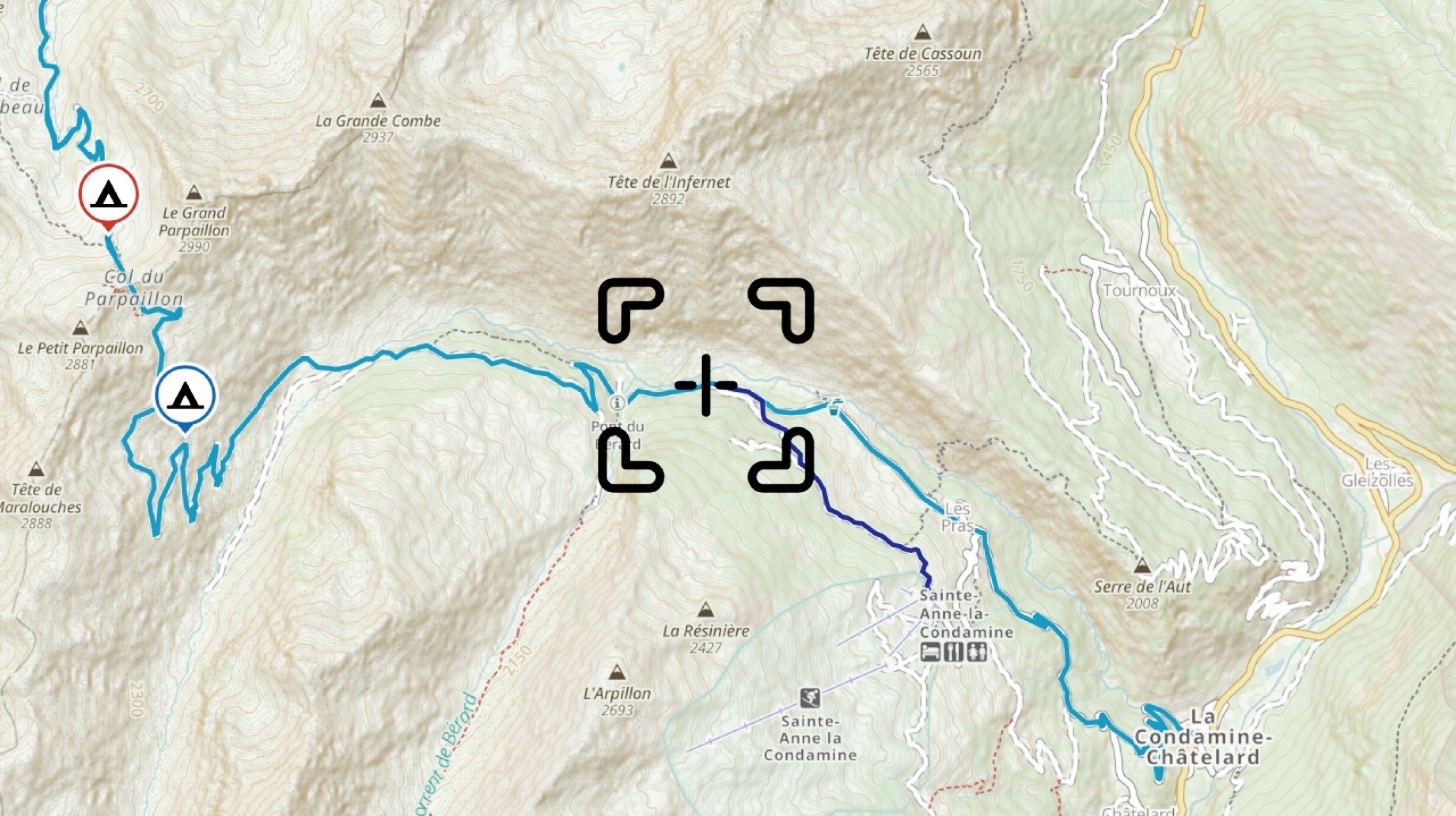

Further you can check out ARB’s range of products. They have been in the market for a while. That will give you an overview of whats available and probably popular enough to make substantial money off of it. We have installed their Old Man Emu Suspension, but more on that later.
One of the biggest manufacturers for modifications is ARB. See their product line for the 100 Series here: https://arbusa.com/toyota-land-cruiser-100-series-1998-2002
Importance of choosing the right modifications
It’s important to choose the right modifications for your vehicle based on your specific needs and the type of overlanding you plan to do. Improper modifications can actually harm the vehicle’s performance and cause issues on the road.
When choosing modifications, consider the various factors. Such as the weight of your vehicle and gear, the terrain you’ll be traveling on, and your budget.
Must-have upgrades for overlanding
Some upgrades that are considered must-haves for overlanding include heavy-duty suspension, heavy-duty wheels and tires, and auxiliary lighting. These upgrades will help ensure that your vehicle is capable of handling the demands of overlanding.
Tires and Wheels For The Land Cruiser 100 Series For Overlanding
Here we follow up with a specific article about tires and wheels for your Land Cruiser 100 for Overlanding. Including more information about the biggest tire size you can run without installing a new suspension and lifting the vehicle. We will also talk about rims or wheels and what to look out for, when replacing the factory wheels.
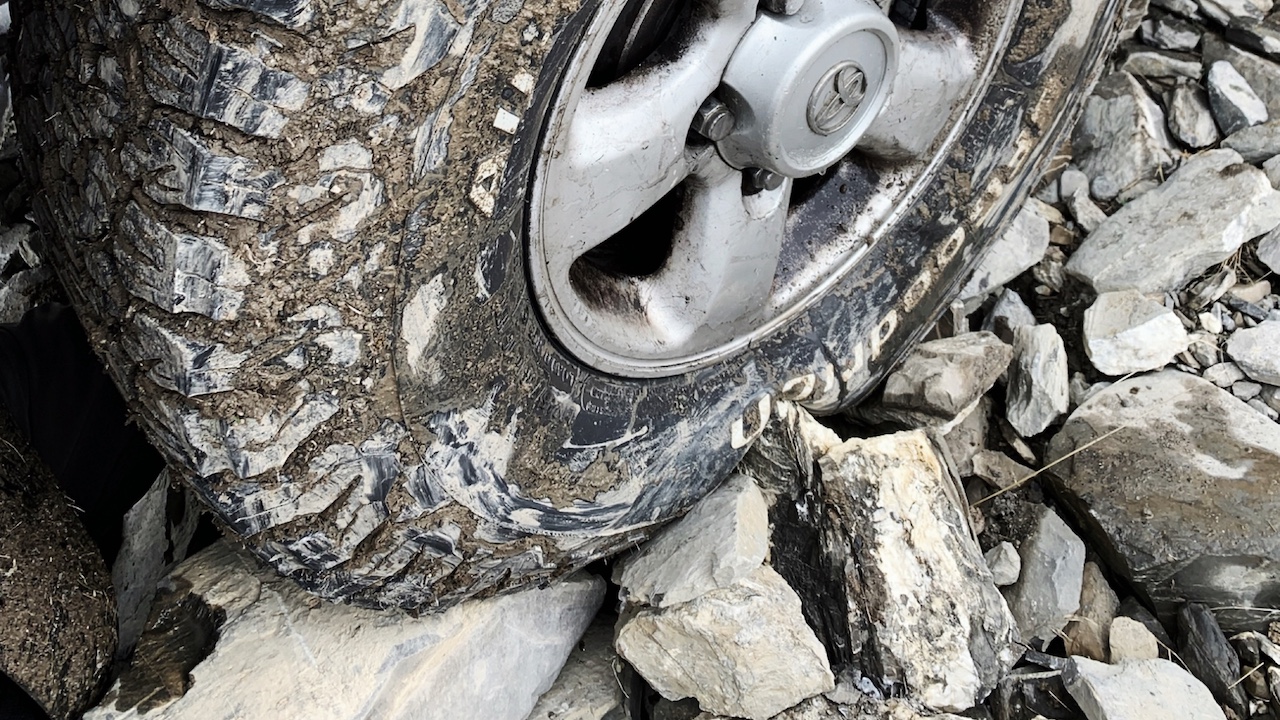
Rear Bumper Bar and Tire Carrier
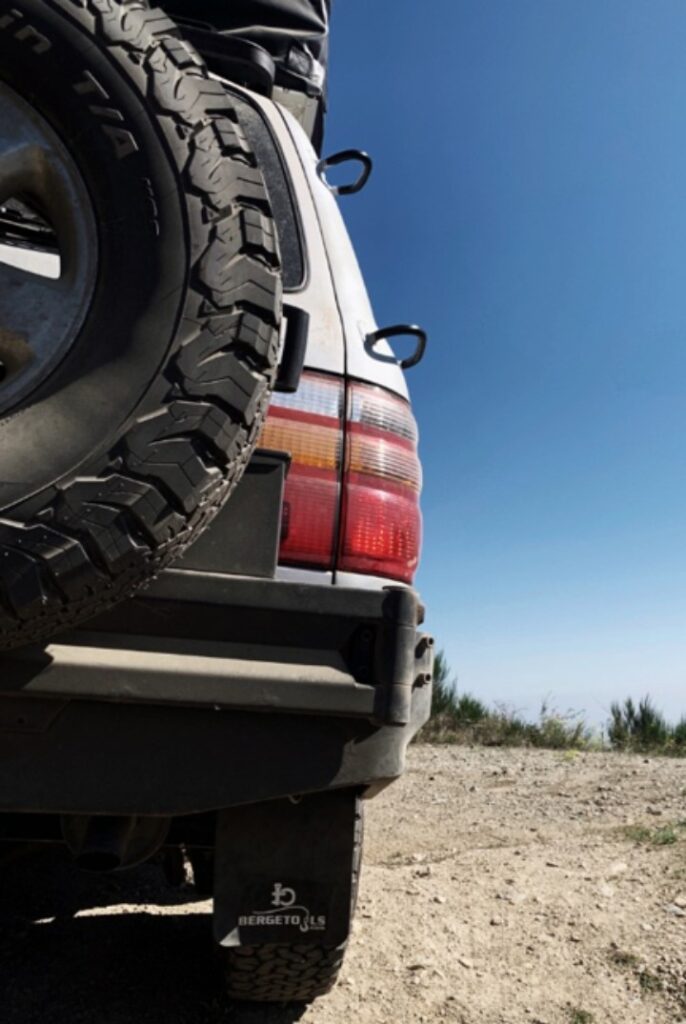
Adding a tire carrier to the rear bar improves access to the spare tire and makes it easier to service. It also clears space on the undercarriage for a future auxiliary fuel or water tank.
The departure angle of the 100 Series‘ OEM rear bumper limits its otherwise excellent offroad capabilities. As a result, an after market high clearance rear bar is a great investment. Replacing it prevents damage and increases departure angle on your Land Cruiser 100 for Overlanding.
Heavy Duty Suspension and Lift
Another huge topic we will cover in a separate post in the near future. Packed with details and what to look out for once you have lifted your Land Cruiser 100.
Again, join the Newsletter to get notified.
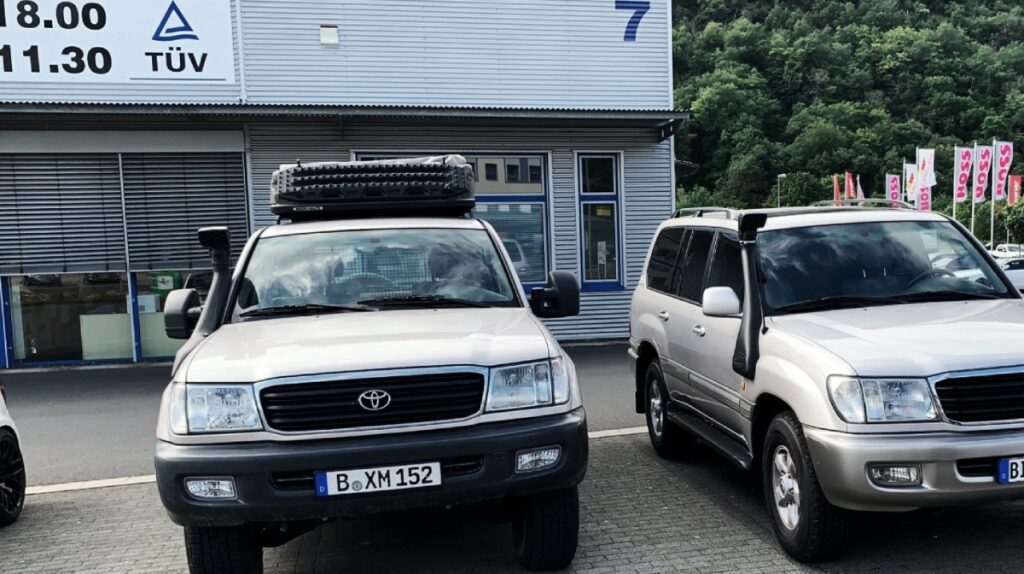
Importance of professional installation
It’s important to have modifications professionally installed to ensure that they are done correctly and will perform as expected. Improper installation can cause damage to the vehicle and put your safety at risk. An experienced mechanic will be able to make the necessary modifications and upgrades to help ensure your Land Cruiser 100 is ready.
VII. Conclusion
In conclusion, the 2001 Toyota Land Cruiser 100 is a versatile and reliable vehicle that is well-suited for overlanding. The vehicle has many pros, including its off-road capabilities, versatility, and comfort. The Land Cruiser 100 is also known for its reliability and is considered to be a safe and dependable vehicle.
However, there are also some cons to consider, such as its fuel economy, possible maintenance costs, and size. The vehicle may also be limited by its age, as it may not have some of the newer features and advancements found in newer vehicles.
Customizing and upgrading your Land Cruiser 100 can help mitigate some of its cons and enhance its overall performance for overlanding. When considering customizing and upgrading your vehicle, it’s important to choose the right modifications, have them professionally installed, and consider factors such as the type of overlanding you plan to do, the weight of your vehicle and gear, and your budget.
Read more about different factors HERE or browse a whole category of articles HERE.
In summary, the 2001 Toyota Land Cruiser 100 is a great choice for those looking for a versatile and reliable vehicle for overlanding. With careful consideration and the right upgrades, it can be a reliable and capable vehicle for any adventure.

